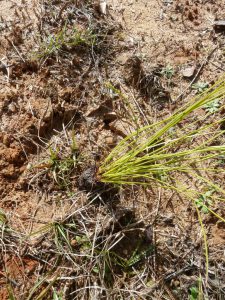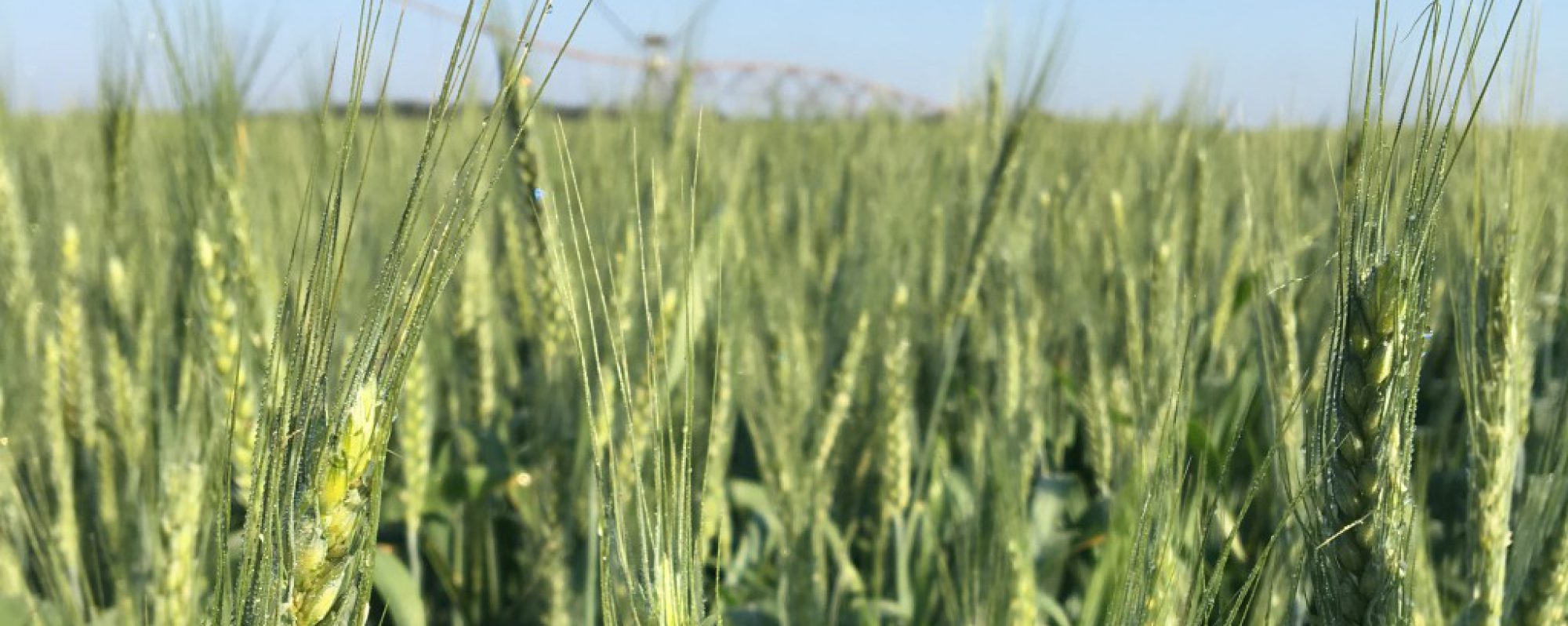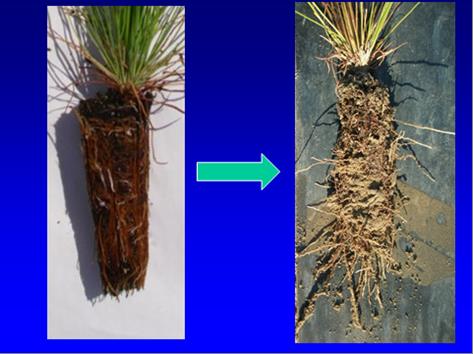We were out looking at longleaf pine seedlings established on a plantation south of town. They have just planted around 12,000 longleaf pines. They are planting at 720 trees per acre. The trees are placed 6 freet from one another and rows are 10 feet apart. This will allow space for mowing for weed control. Also note that the plug is a little out of the soil. This is to keep soil from covering that terminal bud. We don’t want to be too much out of the soil for concerns of losing water either. Once the trees are established, then weed control options will be considered.
 Not only do we need to follow the herbicide label and use recommended herbicides at seedling stage, we need to watch closely about our timing. We need to wait at least two months to apply herbicide over the top of long leaf and slash pines (2 inches of white feeder root growth from 5 laterals), and one month for loblolly. Here are some thoughts on applying herbicides to newly planted pines for herbaceous weed control from UGA Extension Forester Dr. David Moorhead:
Not only do we need to follow the herbicide label and use recommended herbicides at seedling stage, we need to watch closely about our timing. We need to wait at least two months to apply herbicide over the top of long leaf and slash pines (2 inches of white feeder root growth from 5 laterals), and one month for loblolly. Here are some thoughts on applying herbicides to newly planted pines for herbaceous weed control from UGA Extension Forester Dr. David Moorhead:
Be sure that the planted seedlings have started active root growth before herbicides are applied. Dig several seedling up and check for root growth into the surrounding soil. Cold temperature, dry soils or excessively wet soils can delay the start of new root growth. These photos (below) show root plugs of containerized longleaf seedlings. The plug on the left is a newly planted plug where root growth has not emerged from the plug. On the right, the seedling has active root growth into the surrounding soil – at this point it is safe to apply herbaceous weed control. With bareroot seedlings new roots should also be growing into the surrounding soil.
- Be sure that you select the proper herbicide for the pine species you are treating. Loblolly, longleaf and slash pine each have varying tolerance/sensitivity to the various herbicides used for herbaceous weed control. Some herbicides cannot be used for some species of pines. Check the herbicide label to be sure.
- DO NOT add a surfactant to the herbicide used for over-the-top herbaceous weed control. While the Arsenal AC formulation of imazapyr can be safe applied over-the-top of pine seedlings at recommended rates, the same herbicide formulated as Chopper has a surfactant added and will damge/kill seedlings if applied over-the-top.
- Take soil samples to determine pH and soil organic levels and to determine soil texture as herbicide selection and/or rates may need to be adjusted according to soil conditions.
- Avoid treatments when seedlings are stressed from cold, dry, or excessively wet conditions.
- See the following links for specific information on applications, and herbicides:

